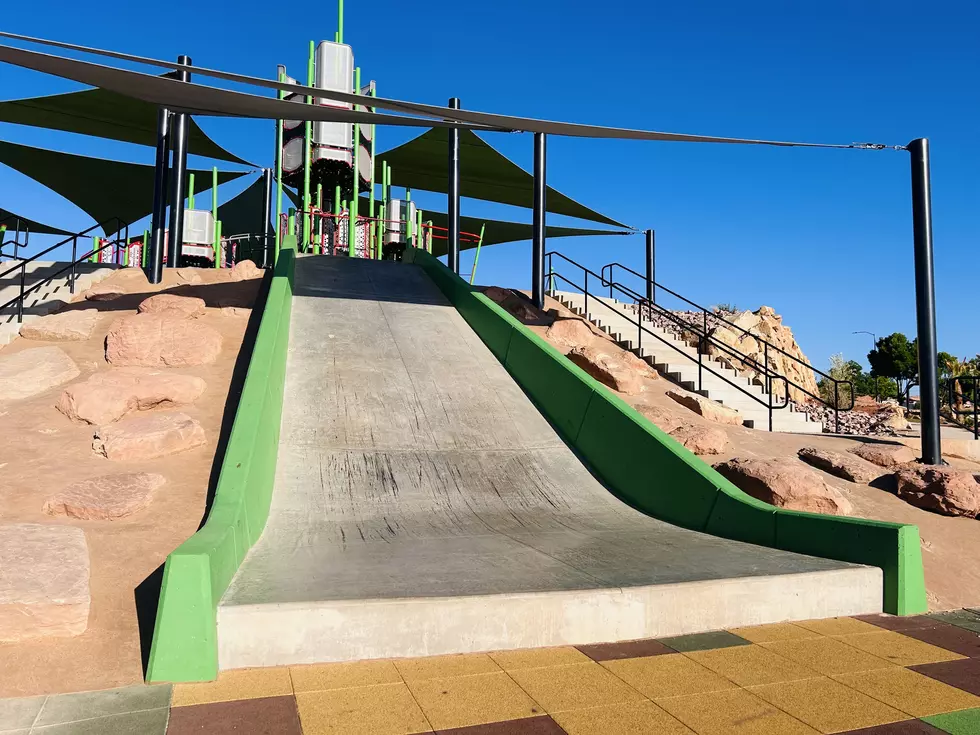
Saving Lives On Utah Roads: The Impact Of Excessive Speeding
We spend a lot of time talking about and rallying for a cure for diabetes, cancer, Alzheimer's and even Covid-19 -- and rightfully so as those are all among the top 10 killers in the state of Utah.
But one completely preventable way of dying in our state is within our grasp right now.
The No. 3 cause of death in our state is accidents, and the No. 1 kind of accident is a car accident. And add to that the No. 1 cause of death in a car accident -- excessive speeding -- and you can see why police and other public officials are begging us to slow down.
Last year 320 people died on Utah roads, down slightly from 332 in 2021.
I remember when the Utah Department of Transportation came out with the Zero Fatalities campaign -- "a number we can all live with."
My wife and I quipped at how humorous that was as that was an unachievable goal.
But even if it could be cut in half, that makes the campaign worthwhile.
So here are some numbers that may help you, well, stay alive on the road:
- The increase of speed from 60 MPH to 80 MPH increases the likelihood of death exponentially. You are four times more likely to die at 80 than at 60.
- Most fatalities occur between 3 p.m. and 8 p.m. with the worst hours being the 1 p.m. and 7 p.m. hours
- You are more likely to get in a car accident on a weekday, but are much more likely to die in a car accident on the weekends (nearly three times more likely).
- Increased speed (logically) means an increased stopping distance. Ofttimes drivers in deadly crashes see the hazard ahead, but are unable to stop in time due to excessive speed.
- Several recent studies have shown drivers who go 10 or more miles per hour above the posted speed limit on the freeway have incredibly elevated stress levels.
- Memorial Day and Labor Day have by far the highest instances of highway deaths of any holidays.
Some other "speed facts" from the EMC Insurance website:
- It’s harder to drive through curves safely as driving speed increases because of centrifugal force. Engineer Kevin Clayton explains, "Those curves just pull at your vehicle and the faster you are moving the more difficult it is to maneuver through the curve without straying into the other lane."
- Speeding increases the risk of a crash because it diminishes a driver’s reaction time. "Whether it’s rain, icy roads, or a deer or pedestrian stepping out in front of you, you are at a disadvantage the faster you are moving," Kevin says. "Our brains are limited by how quickly they can notice—and then react to—an external event. And unfortunately, the faster we are moving, the less chance to react in time to prevent a crash."
- The effectiveness of a vehicle’s built-in occupant protection equipment decreases as the force of the accident increases. This includes seat belts, air bags and the crushing abilities of the vehicle body.
- The faster the vehicle is moving, the greater the rollover risk in vehicles with a high center of gravity.
- Stopping distance is increased. This means that even if the driver can see a danger ahead, it may be impossible to stop in time before impact.
- Speeding while driving puts nearby pedestrians and cyclists at greater risk. According to the Governors Highway Safety Association in 2019, there was an increase of 5% to 6,590 pedestrians killed and an increase of 6.3% or 857 cyclists killed. While there are other reasons for this increase, speed does play a role.
- While fuel efficiency doesn’t impact crashes, it should be a bottom-line concern for any company with a fleet. Driving at higher speeds can significantly decrease fuel efficiency. The U.S. Department of Energy estimates that speeding, rapid acceleration and braking can lower gas mileage by 15-30% at highway speeds and 10-40% in stop-and-go traffic.
- Speeding breaks the law so a speeding driver may incur fines, tickets and even loss of a driver’s license, which can affect continued employment.
- After-effects of speeding can include raised insurance costs, lawsuits, driver loss of license, and vehicles either totaled or needing extensive repairs.
- Always keep in mind that there are other considerations beside the posted speed limit. Drivers need to determine a safe speed according to driving conditions such as wet pavement, icy roads, fog or nighttime visual limitations, or construction zones.
Slow down is the main message here. The life you save could be your own.

Say Goodbye To Knee Pain: Embracing Total Knee Replacement Surgery
I've had several friends who have total knee replacement surgery (guess that means I'm officially old, haha).
The truth of the matter is that our bodies have parts that wear out. And as Americans live longer and longer, it's becoming less acceptable to "just live with the pain."
One of the most common surgeries for those in their 60s (I'm not there yet!) is total knee replacement surgery. This is a drastic and scary proposition, but there are a number of reasons why making the decision to get the surgery is a wise one. From the website BoneSmart.com:
"The risks related to delaying knee replacement surgery often involve the deterioration of the joint, increased pain, and lack of mobility. For many of the reasons, patients sometimes consciously delay their knee replacement surgery, which can have some of these risks:
- risk of deformities developing inside and outside the joint
- risk of muscles, ligaments and other structures becoming weak and losing function
- increased pain / inability to manage pain
- increased disability/lack of mobility
- difficulty with normal activities of daily living"
Knee replacement is a surgical procedure to resurface a knee damaged by arthritis. Usually metal and plastic parts are used to cap the ends of the bones forming the knee joint, along with the kneecap.
Is it risky?
According to healthpartners.com, the answer is a resounding no.
"Complications are very rare. In fact, various studies show that over 95% of patients recover from knee replacement surgery without any complications."
The truth of the matter is that the physical therapy and "pushing through the pain" is by far the hardest part.
"You really need to consider the end goal," said recent total knee replacement patient Doug Hamilton. "If you want that mobility back, if you want to return to normal, you'll do what needs to be done."
According to Dr. Edwin P. Su, "The biggest challenge in the early recovery of a TKR (up to 3 months postoperative) is the regaining of knee motion."
But Su said the biggest key is just getting out and putting the knee to work.
"I recommend that you walk as much as you feel comfortable (at least 2-3 times a day), trying to walk a little further each time," he said. "Many patients will have to work on bending their knee while walking, so some therapists will recommend exaggerating this motion by 'marching.' Equally important is the full extension of the knee with walking, so try to fully straighten the knee when you propel yourself forward."
So is it worth doing?
"After the TKR procedure, all symptoms were improved significantly. The TKR procedure can improve the quality of life for patients, which can be detected for several months after the procedure. Function and pain are the most critical indicators of improvement in quality of life"
In other words, if you're on the fence on this one, just do it. You won't regret it.
READ MORE: 10 free apps to help you get fit in our new normal
More From KDXU 890 & 92.5









